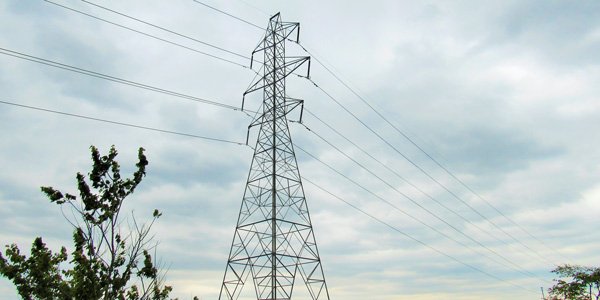By Amanda Durish Cook
MISO last week released a straw proposal that would replace its 15-year futures scenarios with a new set of predictions that assume significantly more renewable generation and carbon-cutting.
The proposal would come out in time to cover the 2021 MISO Transmission Expansion Plan (MTEP 21) process.
The strawman includes three entirely new futures to replace those in place since 2017: an Industry-Announced Plans future, an Advanced Fleet Change 2.0 future and a Fleet Electrification future. All three proposed futures envision more renewable generation and carbon reduction than any of MISO’s existing futures.
“Through the MTEP 20 process, it became clear that stakeholders had a strong desire to revisit futures,” MISO Planning Manager Tony Hunziker said at a special workshop Thursday to discuss the proposal.
“This is a strawman approach. I encourage everyone not to get too locked down on the names,” MISO Executive Director of System Planning Aubrey Johnson reminded stakeholders.
For much of the year, stakeholders have criticized MISO’s futures as depicting too little renewable growth, especially when factoring in the current makeup of the interconnection queue. The RTO announced in late summer that it would forgo reworking its futures for the MTEP 20 cycle and instead focus on modernizing them in time to influence the 2021 batch of transmission projects. (See MISO Halts Futures Work for 2020, Plans 2021 Rebuild.)
Industry-Announced Plans
The “aptly named” Industry-Announced Plans assumes that MISO’s system and fuel mix will continue to evolve based on “company announcements and plans, along with state mandates,” Hunziker said.
He said the future contains “mainly utility” goals and doesn’t consider corporate sustainability goals. Under the scenario, the MISO footprint would be most influenced by retirements and renewable replacements, and state renewable and carbon-reduction targets. The future would also account for demand-side management programs.
With renewable growth expected to be on a consistent trajectory, the future would also assume:
- no new coal units to be built because of cheaper and cleaner alternatives, and coal plant owners to continue age-based retirements based on assumptions similar to the U.S. Energy Information Administration’s expected 46-year lifespan for units;
- technological innovation to drive down the price of wind and solar generation;
- natural gas prices to remain constant with few fluctuations;
- storage growth to be “progressive,” taking an increasing share of proposals in the generation interconnection queue; and
- “moderate” continued growth in the electric vehicle fleet.
Advanced Fleet Change 2.0
Hunziker said the proposed Advanced Fleet Change 2.0 builds on the trends in MISO’s existing Accelerated Fleet Change future.
“We realize we’re probably going to have to change the title,” he added, smiling.
The future would expect the MISO footprint — driven by a robust economy paired with changing federal, state and local policies — to experience increased energy demand and a 50% reduction in carbon emissions in the power sector from today’s emissions levels. It also would assume renewable-friendly policies, decreased construction costs and technological breakthroughs to propel a big jump in renewable, hybrid and storage resources. The number of distributed energy resources grows by 30% or more from today’s numbers under the scenario. The Organization of MISO States has recently estimated that the RTO contains about 4.5 GW of unregistered DERs.
Advanced Fleet Change 2.0 would also assume:
- coal plant retirements to occur after about 36 years of operation, and earlier coal retirements to spur a heightened reliance on natural gas resources;
- higher demand to cause natural gas prices to rise;
- enough EVs are adopted that they contribute to tempering peak load and ramping;
- continued electrification trends to drive a 40% increase in energy; and
- increased use of demand-side management programs.
Fleet Electrification
“This one is dominated by a 70% increase in energy due to deep electrification. It’s across all industries and residential,” Hunziker said of the Fleet Electrification future.
The future predicts a “booming economy” where most commercial and passenger vehicles are electric, and policies at all levels of government support carbon reduction so that emissions are reduced by 80% or more. Under the scenario, research and development would accelerate to make energy storage become cheaper and more effective. That atmosphere would foster a minimum 50% of total energy being served by renewables.
Besides the “deep electrification, the future predicts:
- high natural gas prices because of increased dependence on the resource type;
- the shortest coal plant lifespan of the three, at an estimated 30 years of operation;
- enough storage and EV charging to significantly reduce peak and ramping demand;
- DERs sourcing 30% of energy served while hybrid renewable-and-storage resources deliver benefits to the grid during off-peak hours;
- solar unit prices hitting a record low while wind generation costs also decrease; and
- demand-side management programs gaining ground as a result of high energy demand and decarbonization policies.
Past Futures
In recent years, MISO has been using four future scenarios in MTEP, including a Limited Fleet Change in which the fleet remains relatively static with coal units retiring at the end of their useful life; a Continued Fleet Change, in which the grid develops according to the trends of the past decade; an Accelerated Fleet Change, driven by a strong economy that increases demand and motivates carbon regulations and increased renewable use; and a future in which distributed and emerging technologies become more widely adopted.
Since creating the futures in 2017, the RTO has rationalized reusing them by citing the limited changes in state policy and economic trends, making only small updates to projected renewable penetration, cost assumptions and capacity credits. MISO’s tone changed this year with officials repeatedly saying the futures were not keeping pace with the actual renewable buildout. (See MISO Readies MTEP 19, Debates Futures Change.)
MISO will hold additional MTEP futures workshops on Nov. 14 and Dec. 5, where it will present more detailed data on the proposed futures. The RTO is asking for written stakeholder reactions to the trio of proposed futures through Nov. 7.





